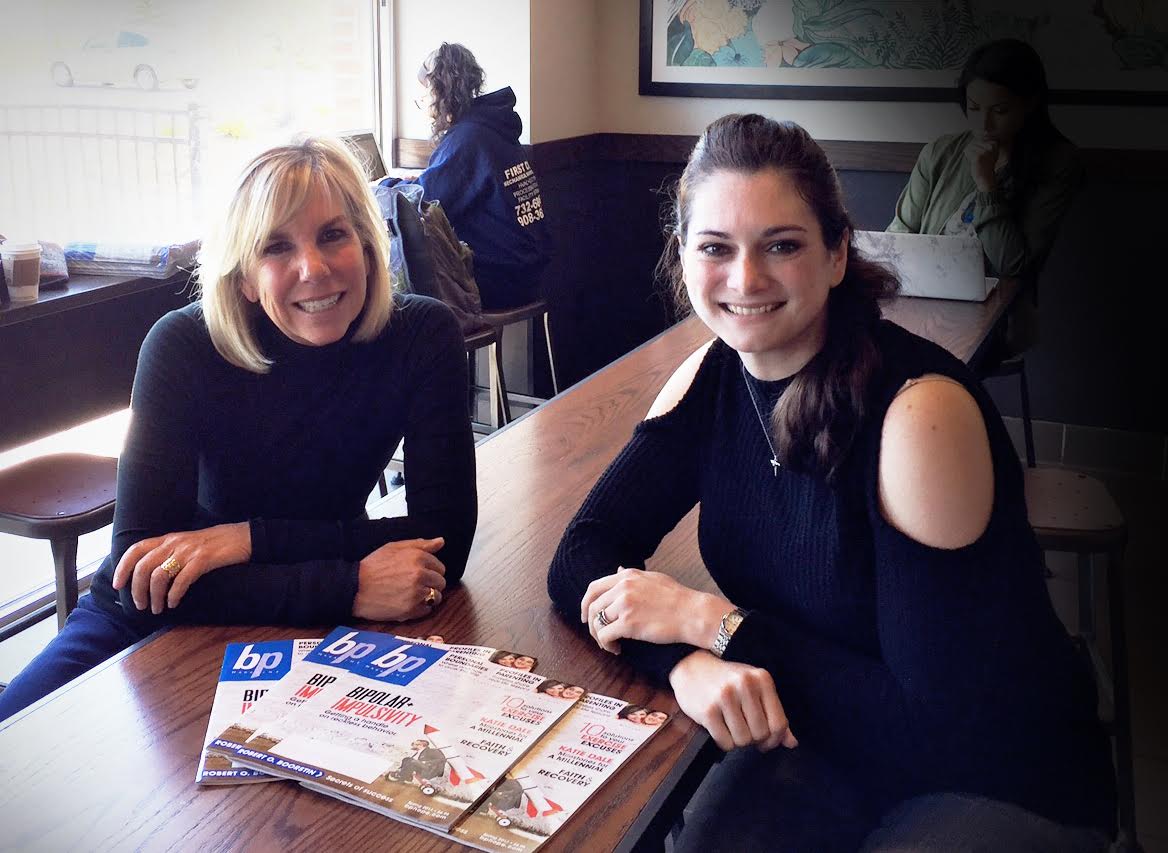Sitting inside a lively Starbucks shop this Tuesday morning, I met with distant relative and publisher of bp magazine, Joanne Doan. Her radiant smile and confident demeanor gave me an inspiring subject to glean insight from as she graciously offered the opportunity to get to know her a little. Here are my findings from the interview.
BipolarBrave: Joanne, tell me a little about your background and how you got into this industry.
Joanne: My degree was in economics, and it was never a dream to be a publisher but I loved magazines — I was a magazine junkie. I sort of fell into the business, but it wasn’t coincidence. Call it the path I was supposed to take, fate or destiny.
BipolarBrave: So why bipolar disorder? Did you or someone you knew have it?
Joanne: I don’t have bipolar but my grandma did. Her maiden name was Courage, so that’s what I named the business after: Green Apple Courage… and Green Apple because I eat a green apple every day.
BipolarBrave: What were the steps you took to starting bp?
Joanne: At the time I was a single mom with three girls and had an okay job, with great coworkers, but it was a lot of travel and time-consuming work for the pay. A gentleman came into my consulting firm with schizophrenia who had a magazine for schizophrenia in Canada and he asked for my help. Then I was approached by someone else in marketing about a bipolar magazine. Nancy Tobin, a very talented editor from Buffalo was instrumental in launching bp with me. She knew a ton about newspaper and magazine businesses so we developed the first issue.
BipolarBrave: Has finding content ever been a problem?
Joanne: Content has never been a problem. bphope.com, bp’s Facebook page, and the email we receive is a robust source of comments and content.We have enough topics to be a monthly magazine. Because bp is a chronic condition, there’s a lot to write about: hope, support, and ways to manage bipolar. Just as there are issues for body and fitness magazines every month, the brain is an organ that needs to stay in shape!
BipolarBrave: What’s your magazine’s influence in the healthcare world?
Joanne: Our business launched in 2004 and we just had our 50th issue last winter, so just like bipolar disorder, our magazine has had its ups and downs. The feedback we’ve received from doctors is that they “love” bp Magazine and that it normalizes bipolar and that’s our goal. On that note, our readers diagnosed with bipolar tell us that the magazine lets them know they are “not alone” and there is hope.
BipolarBrave: What was your vision for the magazine?
Joanne: It was our vision to reach for the stars and have bp look like any magazine you’d see on the shelf at a news stand. We had an editor’s panel for input on what the first issue would look like inside and out. One member on the panel suggested it look like something you could read on the plane or bus and not look “crazy”. So we went with a glossy, cool look that could be on any Barnes & Noble magazine shelf. We keep pushing ourselves that way. Our art director, Beatrice Laurey has carried that vision through.
BipolarBrave: Why bp and not ‘BD’?
Joanne: We decided to just go with bipolar – “bp” vs “disorder” which would have weighed down the logo – it felt more stigmatizing like “mental illness”. Even the logo with the ‘b’ pointing up and ‘p’ pointing down was integral. I asked someone by the name of Imogene who had bipolar to give her ideas on a draft of our logo and she added the up and down points representing the ups and downs of bipolar.
BipolarBrave: What’s a typical day at bp like?
Joanne: Busy! Currently our art director, Beatrice Laurey and our social media manager, Shane Furgal – who leads our websites growth by developing our bloggers, vloggers and partnerships – work from the Buffalo, NY office. We’re also lucky to have a summer student join us and add her research knowledge to the team! However, we really are more of a virtual business with our team working from their home offices in Vermont, Rochester, Niagara Falls and Syracuse – and of course, we work with writers from across the country.
Our typical day involves daily meetings about our websites’ traffic: bphope.com (bipolar) and hopetocope.com (depression) and then review of our magazine’s editorial and print production schedules. I usually speak to our editor, Liz Forbes about interview opportunities which sometimes involves a celebrity. Liz also writes our weekly e-newsletters that focus on new research, symptoms, management tips etc. They’re informative and supportive of our community and receive high praise from our subscribers.
BipolarBrave: What’s up and coming at bp?
Joanne: We just launched an app for our digital magazine last week (28th of April) for bp and will for esperanza. We’re excited that we can offer the full magazines on iPad, Kindle etc.! Since our launch in 2004 we are realizing that bp has evolved into being a leader in the industry as we were interviewed by People magazine when Carrie Fisher died and just last week, Teen Vogue reached out about their upcoming story on bipolar and dating. Our message is clear: brain-based illnesses are common – and that includes bipolar disorder. We continue to work to educate people about bipolar: that it’s a chronic illness like diabetes and arthritis. And like all chronic illnesses early diagnosis and proper treatment are ultimately key to having a good and productive life.


What do you think?